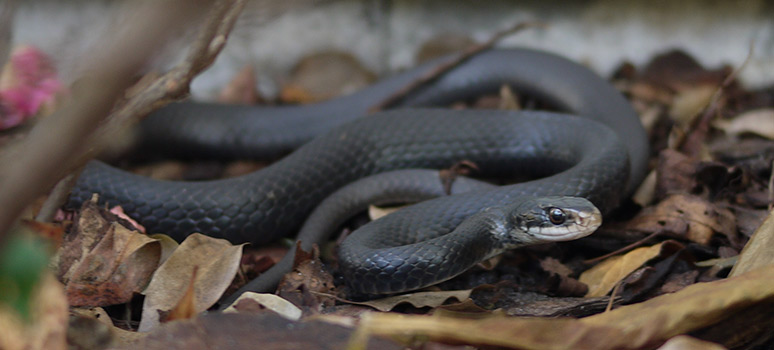While snakes are quite unusual in many ways, it is their sleeping habits that add to the oddity of these reptiles. Most snakes do not have eye lids which means that they sleep with their eyes open. This can be quite disconcerting if you come across one, because you are never really sure if the snake is actually asleep is not. This is how a large number of victims have fallen prey to these creatures, as they mistakenly took a motionless snake as one that was asleep and didn’t survive much more than a couple of minutes past the time that they realized that they made a really bad mistake.

The ability to be asleep while having its eyes open is not the only thing that makes this creature a little more unusual than most. Another is that snakes are prone to hibernate. This seems odd for a reptile, but they will go dormant for several months each year.
Consider that those snakes that live in climates where it is warm practically year around, such as here in Tampa, don’t need to hibernate. Snakes such as pythons and boas live in tropical climates, so there is no need for them to be hibernating because it is quite warm no matter what time of the year you are talking about.
However, when you start talking about areas where it can get quite cold then you will find snakes that do hibernate. Places like Minnesota, Montana, Iowa, Wisconsin, and Colorado can get incredibly cold in the winter, yet can be extremely warm in the summer. This means that the snake will be able to enjoy the warm weather of spring and summer, but as winter approaches it needs to take action to stay alive, and hibernating is the best option for it.
Depending upon the kind of snake that you are talking about and the location of the snake, hibernation can be a relatively short period of time or it can last several months. Most snakes begin the hibernation process about December and it usually lasts until about March or April. However, there are those snakes that can hibernate as early as September and will go until late April.
The primary factor is temperature. When the temps drop to lower than 60 degrees on a regular basis then the snake will go to hibernate. It will stay in hibernation until the temp starts to rise to a point where it is warm enough for the snake to be able to survive in the warmer weather.
Hibernation means that metabolism will dramatically slow down. The snake will breathe quite slowly, and it will go through digestion at a very slow rate. Since the temperature of the animal is very low, the snake is able to survive in this state for months.
Go back to the
Tampa Snake Removal page.
Want to learn more about our company?
Go back to the
Tampa Wildlife Removal home page.
We operate a professional wildlife removal company operating in the Tampa Bay area, including Clearwater and Saint Petersburg. We specialize in
the humane removal of wild animals from buildings and property. We are fully licensed and insured, and operate 24 hours a day, 7 days a week.
Call us at 813-404-7033 for a free price quote.
